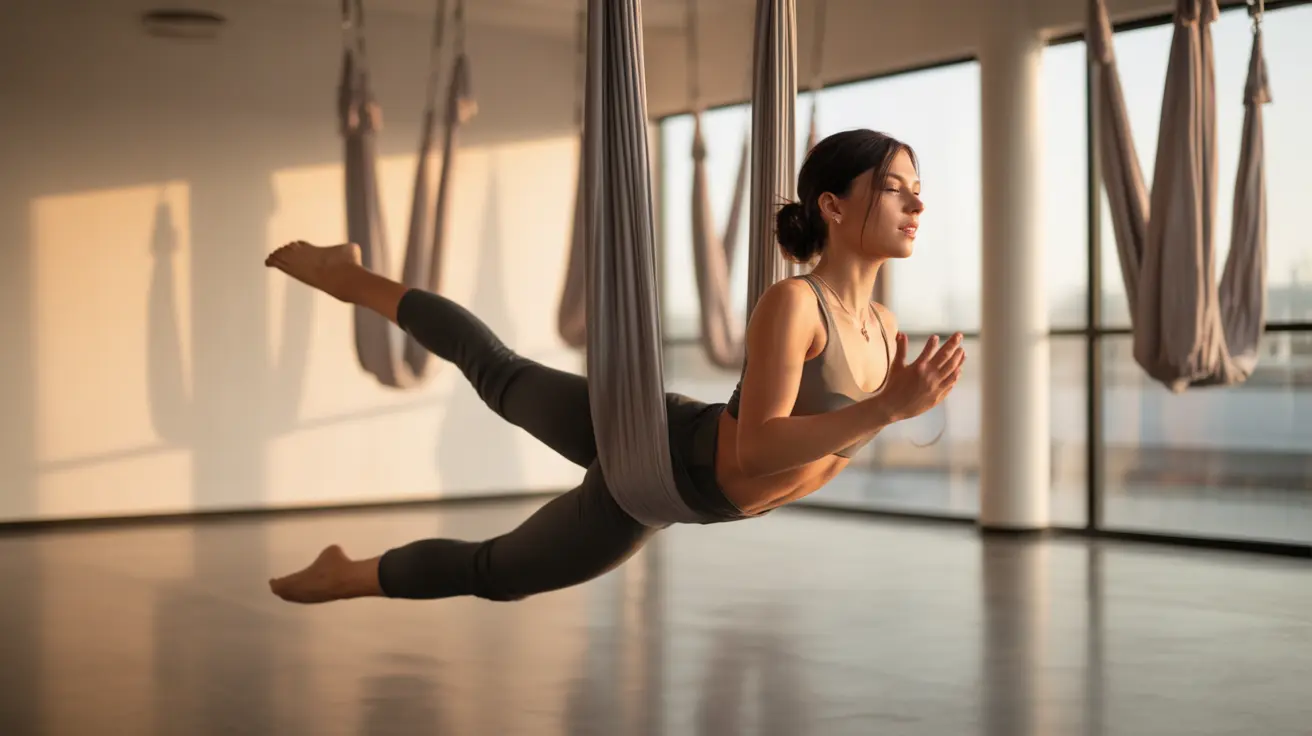Aerial yoga, an innovative fusion of traditional yoga and aerial arts, has gained significant popularity among fitness enthusiasts seeking a unique approach to their wellness journey. This suspended form of yoga practice uses a silk hammock or sling to support practitioners through various poses and movements, offering a fresh perspective on ancient yoga traditions.
Whether you're an experienced yogi looking to expand your practice or a curious beginner interested in trying something new, understanding the fundamentals of aerial yoga is essential for a safe and rewarding experience.
Understanding Aerial Yoga
Aerial yoga combines elements of traditional yoga asanas with aerial acrobatics, performed using a specially designed fabric hammock suspended from the ceiling. This unique approach allows practitioners to explore poses with the support and assistance of the silk, enabling deeper stretches and inversions that might be challenging on the ground.
Physical and Mental Benefits
Enhanced Flexibility and Strength
The suspended nature of aerial yoga creates unique opportunities for building strength and improving flexibility. The hammock assists in achieving deeper stretches while simultaneously engaging core muscles for stability. This combination helps develop:
- Upper body and core strength
- Better spinal decompression
- Increased joint mobility
- Enhanced balance and coordination
Mental Well-being
Beyond physical benefits, aerial yoga offers significant psychological advantages:
- Reduced stress and anxiety
- Improved focus and concentration
- Enhanced body awareness
- Boosted confidence through achievement
Safety Considerations and Contraindications
While aerial yoga can be adaptable for many fitness levels, certain individuals should consult their healthcare provider before participating:
- Pregnant women
- People with high blood pressure
- Those with recent surgeries or injuries
- Individuals with vertigo or inner ear problems
- People with certain cardiovascular conditions
Equipment and Studio Requirements
Safety in aerial yoga begins with proper equipment and environment:
- Professional-grade aerial silks or hammocks
- Certified rigging systems
- Adequate ceiling height
- Proper spacing between practitioners
- Clean, well-maintained equipment
Getting Started with Aerial Yoga
Beginner Tips
For those new to aerial yoga, following these guidelines can ensure a positive experience:
- Start with beginner-specific classes
- Wear appropriate clothing (full-length, fitted garments)
- Arrive early to familiarize yourself with the equipment
- Listen carefully to instructor guidance
- Progress gradually through difficulty levels
Common First-Time Poses
Most beginners start with basic poses to build confidence:
- Supported mountain pose
- Aerial child's pose
- Basic inversions
- Gentle swings and stretches
Frequently Asked Questions
What are the main physical and mental health benefits of practicing aerial yoga? Aerial yoga offers comprehensive benefits including improved flexibility, enhanced core strength, better spinal decompression, reduced stress levels, increased body awareness, and improved mental focus. The practice also helps build confidence and can provide relief from chronic back pain.
Who should avoid aerial yoga due to safety or health concerns? Individuals who should avoid or seek medical clearance before practicing aerial yoga include pregnant women, people with high blood pressure, recent surgery patients, those with vertigo or inner ear problems, and individuals with certain cardiovascular conditions.
How can beginners safely get started with aerial yoga and what precautions should they take? Beginners should start with certified instructors in beginner-specific classes, wear appropriate clothing, arrive early to familiarize themselves with equipment, and progress gradually. It's essential to communicate any health concerns to instructors and always follow proper safety protocols.
What common injuries or side effects can occur with aerial yoga and how can they be prevented? Common issues include minor bruising, skin friction, and temporary dizziness. These can be prevented by wearing appropriate clothing, following proper technique, staying hydrated, and not pushing beyond personal limits. Always warm up properly and listen to your body's signals.
How does aerial yoga differ from traditional floor-based yoga in terms of poses and intensity? Aerial yoga introduces the element of suspension, allowing for deeper stretches and different variations of traditional poses. It typically requires more core engagement and upper body strength than floor-based yoga, while offering unique opportunities for supported inversions and decompression poses that aren't possible on the mat.




